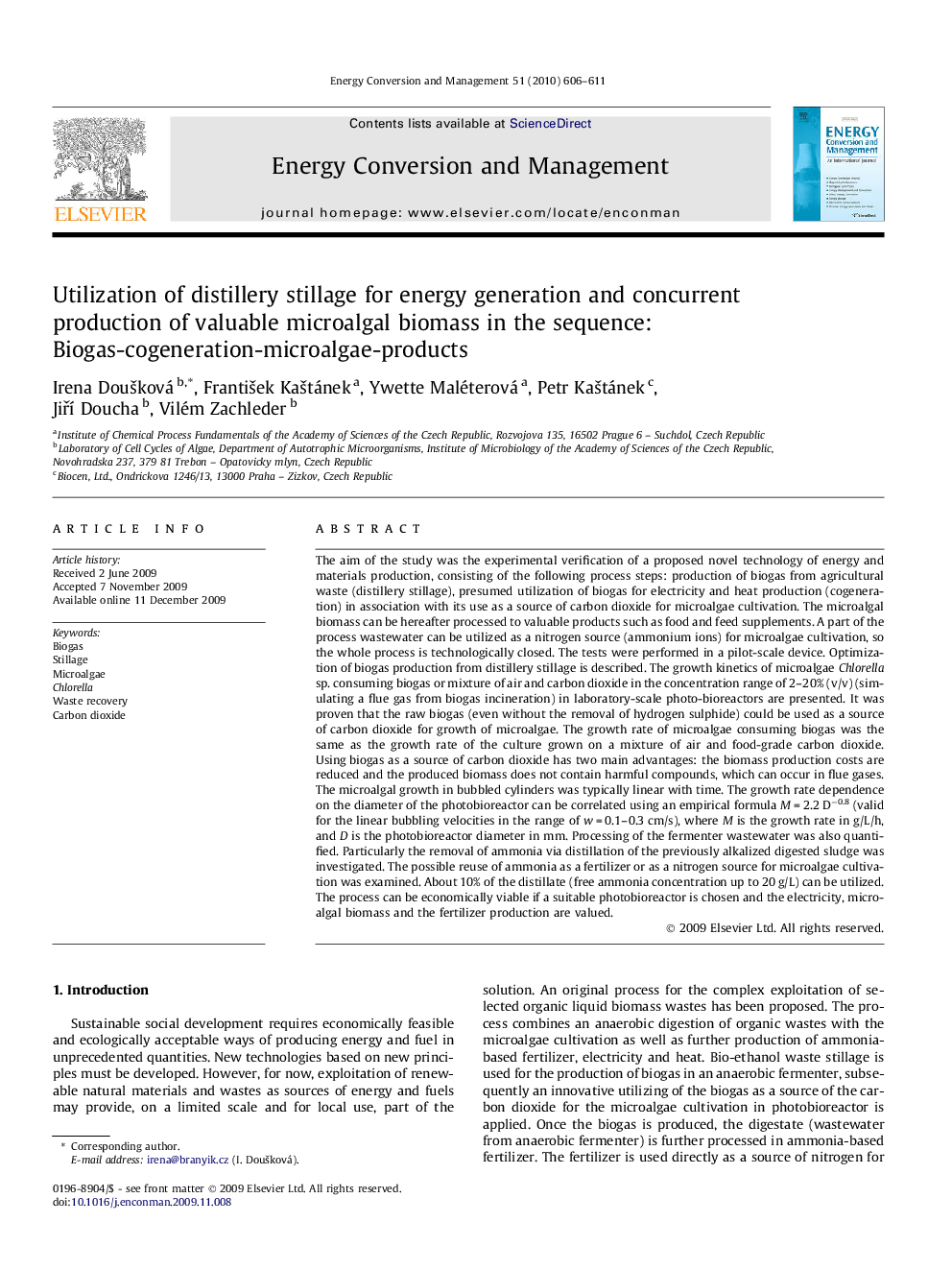| Article ID | Journal | Published Year | Pages | File Type |
|---|---|---|---|---|
| 772631 | Energy Conversion and Management | 2010 | 6 Pages |
The aim of the study was the experimental verification of a proposed novel technology of energy and materials production, consisting of the following process steps: production of biogas from agricultural waste (distillery stillage), presumed utilization of biogas for electricity and heat production (cogeneration) in association with its use as a source of carbon dioxide for microalgae cultivation. The microalgal biomass can be hereafter processed to valuable products such as food and feed supplements. A part of the process wastewater can be utilized as a nitrogen source (ammonium ions) for microalgae cultivation, so the whole process is technologically closed. The tests were performed in a pilot-scale device. Optimization of biogas production from distillery stillage is described. The growth kinetics of microalgae Chlorella sp. consuming biogas or mixture of air and carbon dioxide in the concentration range of 2–20% (v/v) (simulating a flue gas from biogas incineration) in laboratory-scale photo-bioreactors are presented. It was proven that the raw biogas (even without the removal of hydrogen sulphide) could be used as a source of carbon dioxide for growth of microalgae. The growth rate of microalgae consuming biogas was the same as the growth rate of the culture grown on a mixture of air and food-grade carbon dioxide. Using biogas as a source of carbon dioxide has two main advantages: the biomass production costs are reduced and the produced biomass does not contain harmful compounds, which can occur in flue gases. The microalgal growth in bubbled cylinders was typically linear with time. The growth rate dependence on the diameter of the photobioreactor can be correlated using an empirical formula M = 2.2 D−0.8 (valid for the linear bubbling velocities in the range of w = 0.1–0.3 cm/s), where M is the growth rate in g/L/h, and D is the photobioreactor diameter in mm. Processing of the fermenter wastewater was also quantified. Particularly the removal of ammonia via distillation of the previously alkalized digested sludge was investigated. The possible reuse of ammonia as a fertilizer or as a nitrogen source for microalgae cultivation was examined. About 10% of the distillate (free ammonia concentration up to 20 g/L) can be utilized. The process can be economically viable if a suitable photobioreactor is chosen and the electricity, microalgal biomass and the fertilizer production are valued.
